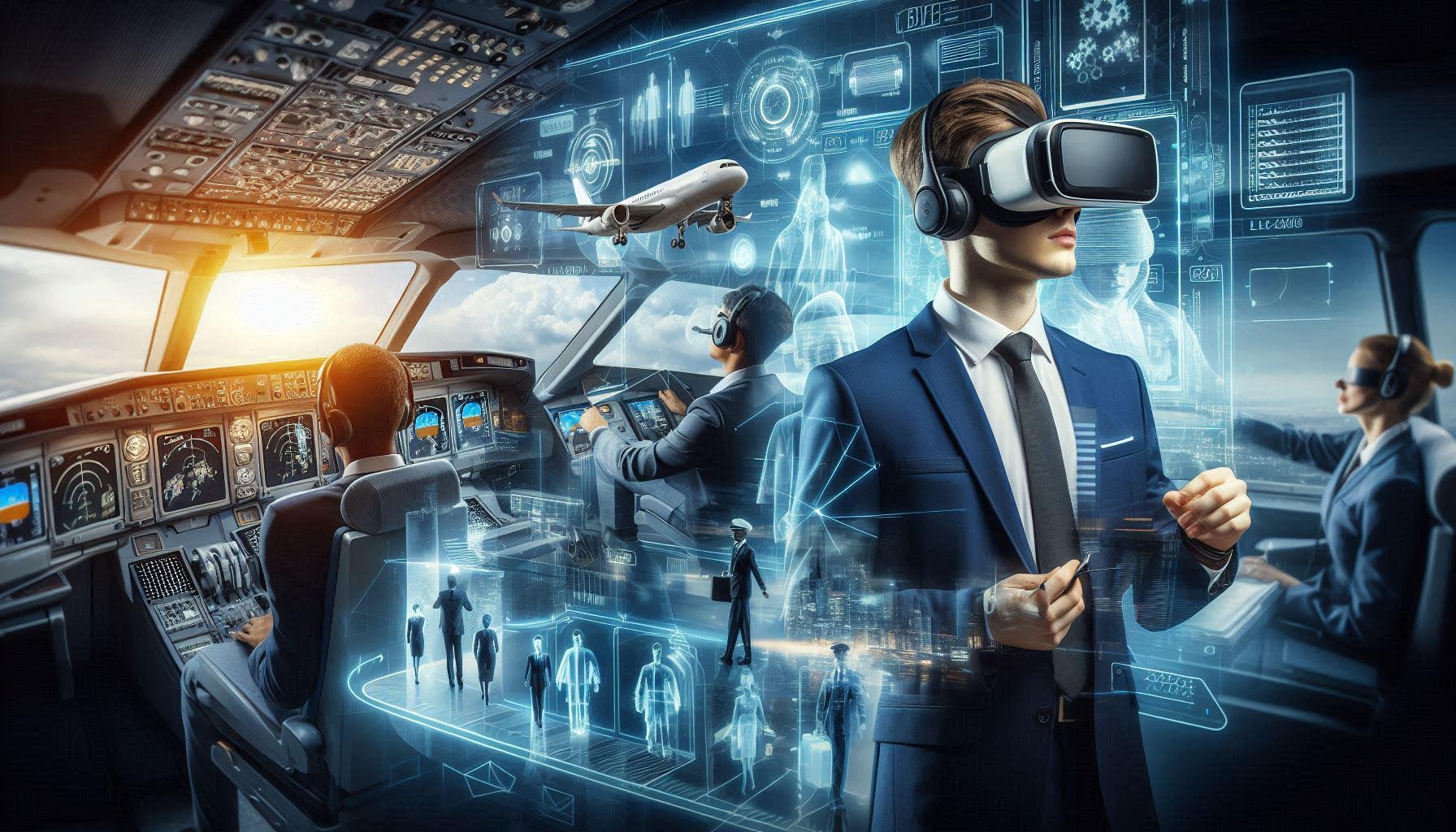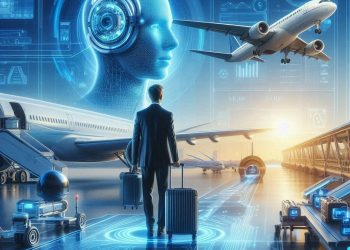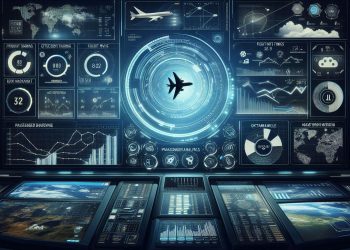Augmented Reality (AR) and Virtual Reality (VR) in Pilot and Cabin Crew Training
Augmented Reality (AR) and Virtual Reality (VR) in Pilot and Cabin Crew Training: Revolutionizing Aviation Education
The aviation industry has always been at the forefront of innovation, from supersonic jets to AI-powered air traffic control. Now, Augmented Reality (AR) and Virtual Reality (VR) are transforming how pilots and cabin crews train, offering immersive, cost-effective, and safer learning experiences. As airlines and training centers embrace these technologies, the days of relying solely on traditional simulators and classroom instruction are fading. This article explores how AR and VR are reshaping aviation training, their real-world applications, and the challenges they aim to overcome.
AR vs. VR: What’s the Difference?
Before diving into their applications, it’s essential to distinguish between AR and VR:
- Augmented Reality (AR) overlays digital elements (e.g., graphics, instructions) onto the real world via devices like smart glasses or tablets. Think of it as a “digital layer” enhancing reality.
- Virtual Reality (VR) immerses users in a completely computer-generated environment, typically through a headset. It replaces the real world with a simulated one.
Both technologies offer unique advantages for aviation training, from practicing emergency procedures to mastering complex machinery.
How AR and VR Are Transforming Pilot Training
- Realistic Flight Simulations
Traditional flight simulators are expensive, bulky, and limited to specific aircraft models. VR solves this by creating high-fidelity, customizable simulations. Pilots can practice maneuvers, instrument navigation, and emergency scenarios (e.g., engine failure, severe weather) in a risk-free virtual environment.
For example, Boeing uses VR to train pilots on its 787 Dreamliner, allowing them to interact with a 3D cockpit and practice procedures like engine startups and system checks.
Example: A pilot using a VR headset to practice emergency landings in a virtual cockpit.
- AR for Maintenance Training
AR is a game-changer for aircraft maintenance. Technicians wearing AR glasses can see step-by-step repair instructions overlaid on real engine parts. Airbus has partnered with Microsoft HoloLens to develop AR manuals, reducing errors and speeding up repairs.
Trainees can also practice disassembling virtual engines or troubleshooting systems without touching physical equipment, minimizing risks and costs.
Enhancing Cabin Crew Training with Immersive Tech
- Emergency Procedure Drills
Cabin crews must master protocols for evacuations, medical emergencies, and fire outbreaks. VR immerses trainees in hyper-realistic scenarios, such as:
- A smoke-filled cabin during a fire.
- Rapid decompression at 30,000 feet.
- Managing unruly passengers in a virtual aisle.
Lufthansa Aviation Training uses VR to simulate emergency evacuations, allowing crews to rehearse under pressure without real-world dangers.
- Customer Service and Cultural Sensitivity
VR can recreate diverse passenger interactions, helping crews practice language skills, conflict resolution, and cultural sensitivity. For instance, a trainee might handle a virtual passenger with dietary restrictions or a nervous flyer.
Example: A cabin crew member using VR to practice evacuating a virtual aircraft.
Benefits of AR/VR in Aviation Training
- Cost Savings
Traditional simulators cost millions to build and maintain. VR reduces expenses by up to 60%, as seen in Delta Air Lines’ adoption of VR for recurrent training.
- Chart:Example: A bar chart showing cost savings from AR/VR adoption.
- Safety
Trainees can make mistakes without real-world consequences. For example, pilots can crash a virtual plane and learn from errors, while cabin crews can repeat emergency drills until they achieve perfection.
- Scalability
AR/VR programs can be updated instantly. New aircraft models, regulations, or safety protocols are integrated into simulations without physical modifications.
- Enhanced Retention
Studies show immersive training improves knowledge retention by 75% compared to traditional methods. Engaging scenarios make learning memorable and impactful.
Challenges to Overcome
- High Initial Costs
While AR/VR saves money long-term, developing custom software and hardware requires significant upfront investment.
- Motion Sickness
Some users experience nausea or dizziness in VR environments, limiting session durations. Advances in hardware are mitigating this issue.
- Regulatory Hurdles
Aviation authorities like the FAA and EASA are still adapting certification standards for AR/VR-based training programs.
- Resistance to Change
Instructors and trainees accustomed to traditional methods may hesitate to adopt new technologies.
Real-World Success Stories
- Emirates’ VR Cabin Crew Academy: The airline uses VR to train 4,000+ cabin crew annually, simulating everything from meal service to emergency evacuations.
- CAE’s VR Pilot Training: The global training provider offers VR modules for Airbus A350 and Boeing 737 pilots, cutting training time by 30%.
- Qantas’ AR Maintenance Tool: Engineers use AR glasses to access real-time data during aircraft inspections, improving accuracy.
The Future of AR/VR in Aviation
The next decade will see:
- Mixed Reality (MR): Combining AR and VR for hybrid training environments.
- AI Integration: Smart systems that adapt scenarios based on trainee performance.
- Global Standardization: Regulatory bodies certifying AR/VR programs worldwide.
Conclusion
AR and VR are not just futuristic gadgets—they’re revolutionizing aviation training. By offering realistic, scalable, and cost-effective solutions, these technologies are preparing pilots and cabin crews for the complexities of modern air travel. While challenges remain, the industry’s trajectory is clear: immersive training is here to stay, ensuring safer skies and more skilled aviation professionals.





